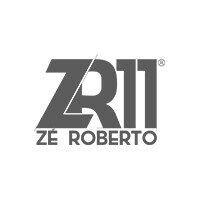Introduction:
Soccer is a sport that has undergone significant changes over the years, with advancements in technology and rule modifications shaping the modern game. One aspect that has caught the attention of many fans is the increasing prevalence of sports bras worn by soccer players. While this may have been initially associated with female athletes, it is now common to see male players donning similar garments. In this article, we will delve into the reasons behind this phenomenon and explore the role of GPS tracker vests in soccer.
Why Do Soccer Players Wear Bras?
The sight of male soccer players wearing sports bras may seem perplexing to some enthusiasts. To understand this trend, we need to recognize that these harnesses are actually GPS tracker vests, not traditional sports bras. These vests are designed to track a player’s movement throughout a match, providing coaches and managers with intricate data on various aspects of performance.
Data has become a vital component in modern football, and the collection of in-game statistics plays a pivotal role in gaining a competitive edge. While managers can observe a game from the touchline, biases and missed details are inevitable. GPS tracker vests offer an additional perspective, enabling coaches to make more informed decisions based on cold, hard data. This wealth of information can impact training sessions, individual player treatment programs, and overall team tactics.
How do these devices work?
The physical devices used to record data for GPS tracking are discreet and do not hinder a player’s movement. A small GPS device is securely placed within a pouch at the back of the vest. These vests are meticulously designed to ensure maximum comfort during matches, with no restrictions on movement or discomfort.
Alternative methods of GPS tracking, such as integrating trackers into shirt sleeves or wearable bands, exist. However, the small vests discussed in this article are the most prevalent means of tracking player statistics during matches.
What sort of data do GPS soccer bras collect?
GPS tracking vests, or sports bras, gather an impressive range of data that sheds light on a player’s performance. Running statistics are crucial in evaluating a player’s workload and fitness levels. These vests provide insights into metrics such as running speed, sprinting distance, acceleration, and deceleration. Coaches can identify players who consistently put in extraordinary effort, showcasing exceptional work rates.
Furthermore, these tracking devices contribute significantly to injury prevention. GPS vests monitor heart rate, athlete load, G-force and impact data, and high-intensity playtime. This wealth of information assists in establishing personalized training programs, player rehabilitation plans, and comparing the needs and requirements of each squad member. The integration of sports science and medicine with data tracking provides a significant advantage in player management.
Several companies, such as Catapult, PlayerTek, and StatSport, offer wearable tracking technology to elite clubs. The availability of budget-friendly options has made GPS vests a staple even at lower league levels. It is not uncommon to see footballers wearing sports bras and other innovative gear in semi-professional settings.
Technology in Soccer
The rise of GPS tracking vests exemplifies the increasing role of data-led strategies in professional soccer. Clubs across the world are embracing data and technology to enhance performance and monitor player progress. From improved set-piece coaching to intelligent recruitment processes, data analysis has become an integral part of the game.
For soccer fans seeking opportunities in the statistics and data side of the industry, there is fierce competition. To stand out, consider expanding your knowledge of data analysis within football. Explore our guide to 10 excellent sports analytics books, offering insights for all levels of expertise. From explanations of Expected Goals (xG) to historical works on the development of data in football, this carefully tailored list provides a wealth of learning resources. Additionally, our article on how to become a sports analyst offers a practical step-by-step guide to entering the world of sports analytics. With opportunities available at top-level clubs and leading publications, now is the perfect time to pursue a career in soccer data and analytics.
Frequently Asked Questions
Q: Are sports bras worn by male soccer players the same as those worn by female players?
A: No, the garments worn by male players are actually GPS tracker vests. They serve the purpose of tracking a player’s movement and collecting individualized performance data during matches.
Q: What kind of information can be gathered through GPS tracking vests?
A: GPS vests collect data on running statistics, such as sprinting distance, acceleration, and deceleration. They also monitor heart rate, athlete load, and high-intensity playtime to aid in injury prevention and player management.
Q: Which companies provide GPS tracking technology to professional clubs?
A: Companies such as Catapult, PlayerTek, and StatSport offer wearable tracking technology to elite clubs. These technologies have become more affordable in recent years, making them accessible to clubs at various levels.
Conclusion
The utilization of GPS tracker vests in soccer reflects the growing importance of data-driven strategies within the sport. These vests offer valuable insights into player performance and aid in injury prevention. With technological advancements playing an increasingly pivotal role in soccer, enthusiasts can explore opportunities in the field of sports analytics. By staying informed and pursuing a career in data analysis, soccer fans can contribute to the ever-evolving landscape of the beautiful game.
About The Author:
Fred Garratt-Stanley is a proficient football writer, an avid Norwich City fan, and an amateur footballer for AFC Oldsmiths in South London. His works cover a wide range of football subjects, including set-piece coaching, xG analysis, tactical concepts like gegenpressing and zonal marking. Fred has contributed to esteemed publications such as British GQ, VICE, FanSided, and Football League World.


